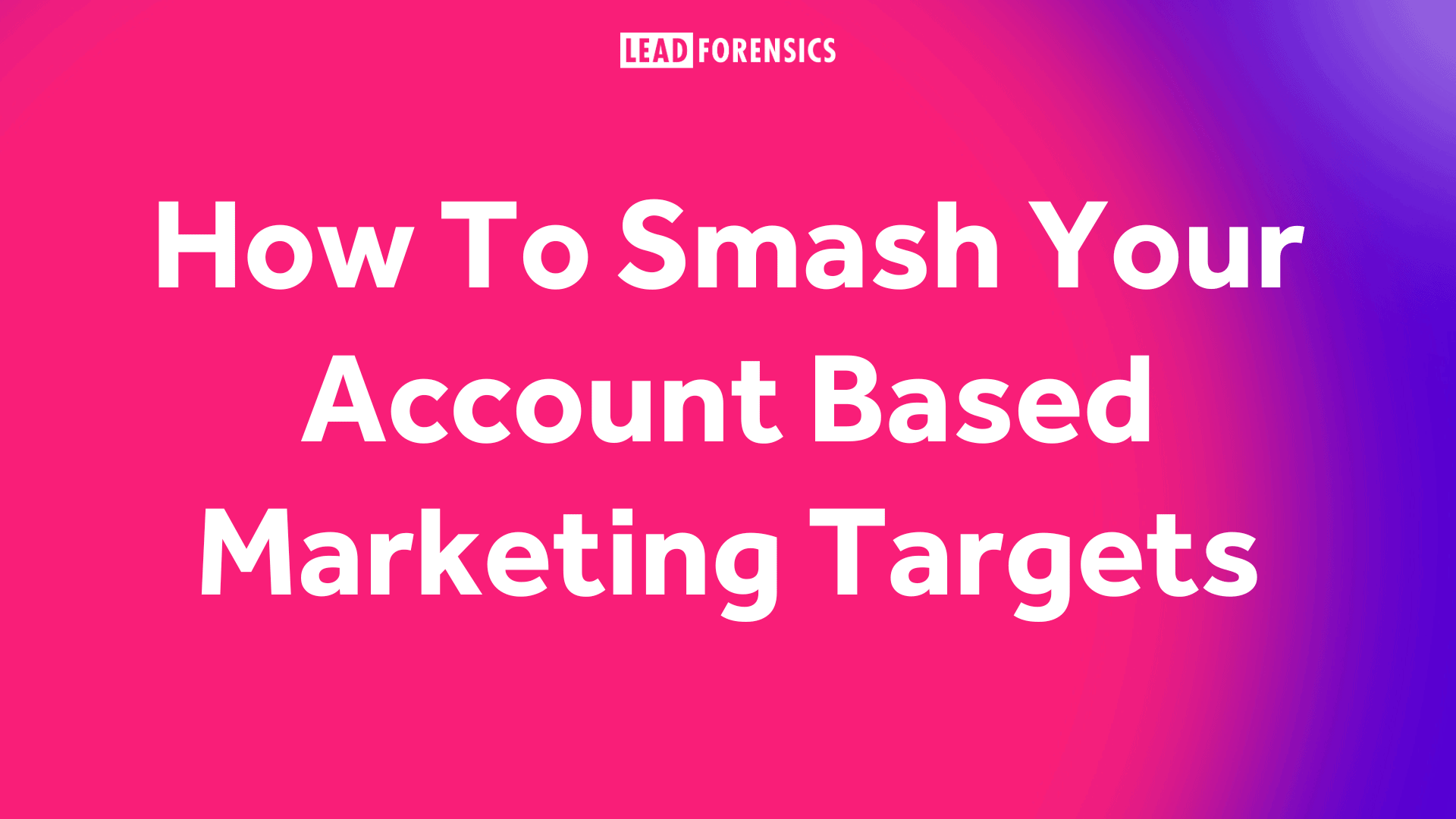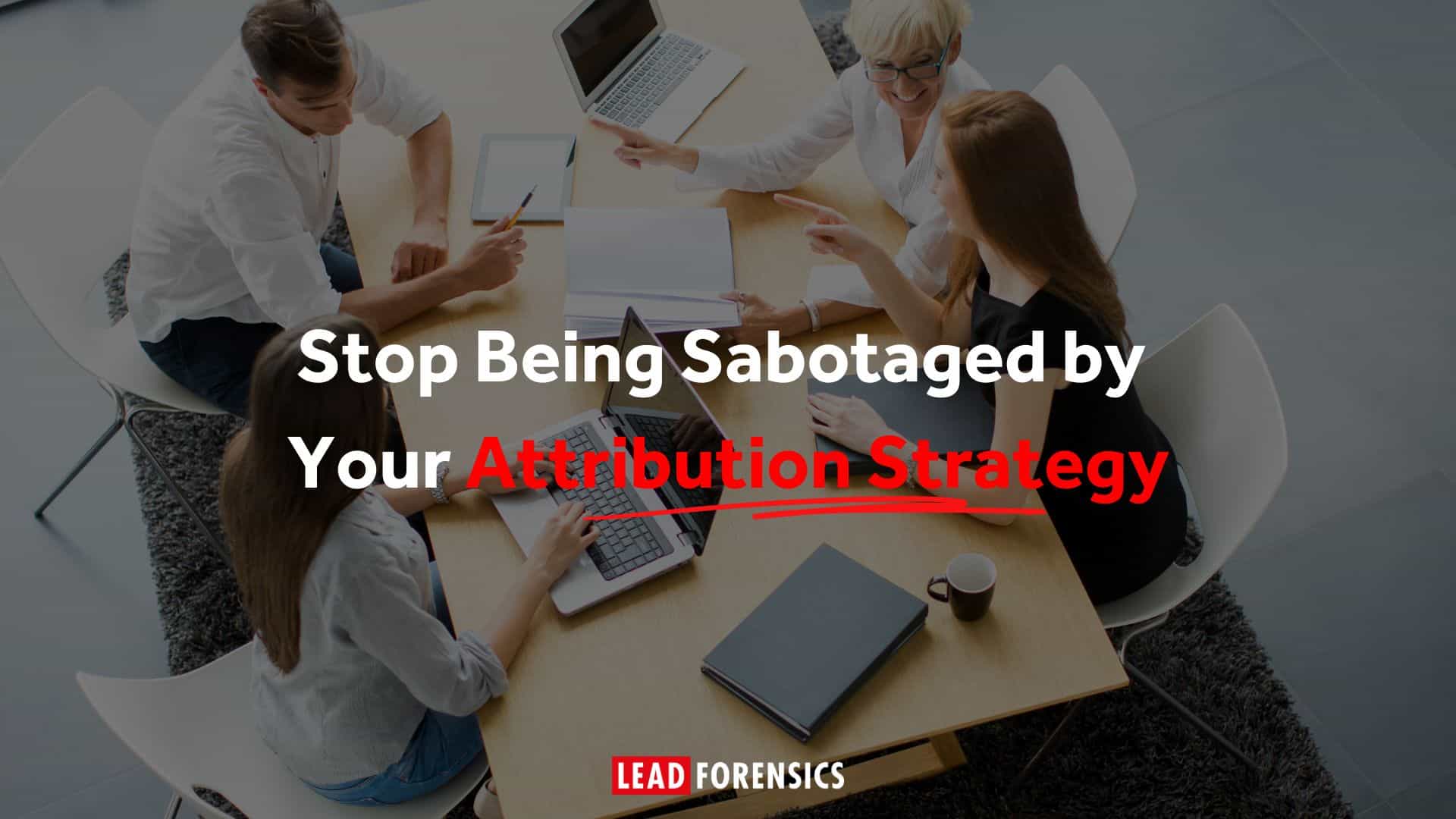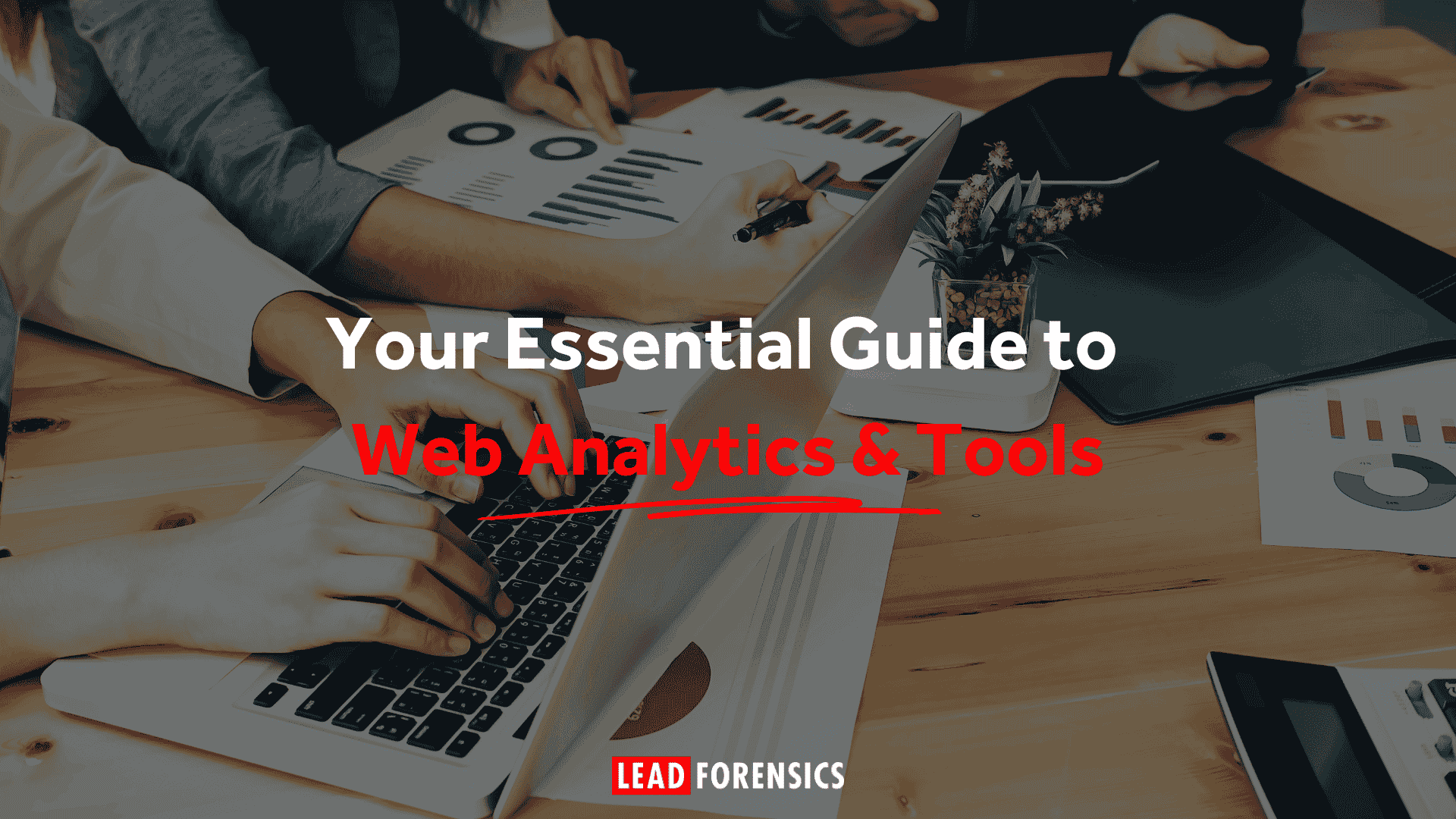This type of approach naturally lends itself to targeting larger businesses over a longer period of time and the end result should make all your efforts worthwhile – securing you larger and longer lasting accounts.
But it doesn’t just have to be large accounts. It could equally be used to target smaller companies within a specific industry. Either way, you’ll want to ensure you’re on track and hitting your targets, especially as you’ll be focusing so much of your resources on a specific account.
Thankfully, advances in technology now mean ABM has become increasingly easy to action and manage. From modern CRM systems to marketing automation software and clever tools like Lead Forensics, there are now many ways to keep on top of your activities.
Plus ways to enhance, track and evaluate them. For example, with Lead Forensics software it is now possible to be automatically notified the moment your dream account visits your website. That means you could be hitting the phone and calling them within five minutes of their visit, putting you well ahead of the competition.
So with the right know-how and tools in place, ABM can be an effective strategy. Now, what do you need to do to make sure you smash your targets?
Make sure you understand the process
A big part of ABM is accurate profiling. You need to know exactly who you want to target, so start by taking your time to develop a strong list. The number of accounts you go for will depend entirely on your business model and the product/service you’re pushing. It may be you need anything from 5 to 50 big accounts, or 1,000 smaller targets would work better.
Once you’ve compiled your list you can start producing content that you can use to target key contacts at each business. The content should help you segment your list and reveal who you need to be speaking with by helping you track which departments and job roles, among other data points, visit your site the most often.
Producing appropriate content for each specific target will take time if you’re to hit all the right buttons. Above all, it needs to be relevant and you need to get your timings spot on. Personalization is key in this context.
Once you know the ‘who’ and ‘what’, you need to figure out ‘where’ and ‘how’. That means deciding where it will be best to reach your targets and in what format. The overall aim here should be to encourage your targets to engage with your content over time.
Think about what’s going to be most effective for your particular target list. Should you be looking at events? Which communication platforms should you be on? Do you need to do targeted ads, and if so, where should you run them?
Get the right technology
There are loads of helpful and innovative tools available that can help you with your ABM activities, including systems for content development, distribution and measurement.
At the end of the day, you need to know which content is working for which targets and why. That way you can replicate your success with others. Looping all of your activity, insights and information together will help you do this. From reaching out, to engaging and closing, getting a 360-degree view of your target accounts is essential.
Tools and systems for communication are equally important. But we’re not just talking about automated communication here, you should be aiming for genuine engagement and individual follow-ups.
Analytics and business intelligence (BI) tools are also essential, as for ABM to be successful you need to know your numbers and what’s working and what’s not.
Marketing and sales need to work closely together to make ABM work. That’s how you’ll start winning the accounts. To find the right tools to support you, put together a brief of what you need. Compare it with what you already have and what you need in addition (or instead of). Work with all teams to find the best solutions for your particular needs.
Ask the right questions
What are you going to measure? And what targets are you going to set?
For social media, follower numbers may seem like an obvious one to monitor. But the number of likes for your Facebook page isn’t that important in general content marketing, and for ABM it’s completely useless! It simply doesn’t matter.
The only thing you do want to know as far as social media is concerned, is if you can reach your targets through those platforms.
To get ABM right, you need to be focused on the right issues. Make sure you’re asking yourself these key questions regularly:
- Are we reaching our target accounts?
- Do we have sufficient data?
- What is the level of engagement with our content?
- Are we improving key sales outcomes?
- Are conversion rates high enough?
Top tip – As far as conversion rates are concerned, you need to make sure that they are higher than your other content marketing activities.
Because ABM is by nature highly targeted and uses personalized content, the hit rate should be much higher than generic content you may be aiming at a buyer persona. If it’s not, then something’s not working so review, analyze and improve what you need to.
Develop outstanding content
For ABM standard content just won’t cut it. It needs high quality, stand out content that will really leave its mark. A big distinction also needs to be made between awareness creating content and relationship building content.
A deep understanding of your buyer journey is going to be crucial here. There are so many options for the kind of content you could create that it’s vital you evaluate what your intended audience will prefer. For example, do they like watching videos? Or do they prefer to read e-books?
What usually works well for ABM is giving targets a taste of your product or service. So if you are an agency providing social media services then you may pull together a report on a target account.
Within the report, you may look at all publically available platforms and provide recommendations for improvements that could be made. This highly personalized content will clearly show you have done your homework. Execute it well and you should place yourself ahead of the competition.
Get personal
We’ve talked a lot about the importance of individually tailored content and ABM, so think how you can personalize your content.
Sophisticated CMSs are now capable of showing specific content, depending on factors such as location, language settings and other information publicly available from a visitor’s IP address.
So once you have a visitor connected via a cookie, think what kind of personalized information you can now provide. Paid advertising campaigns can be totally tailored and personalized towards your target accounts.
The result
To have success with ABM and hit your targets, it is about getting your who, what, where, when and how’s right. Once you are clear which targets you want to hit, at what rate, with what content, in what format and over which channels, ABM has the potential to land you incredible results.
Check out these top tips on using ABM tactics to drive B2B sales, for even more great ideas and advice.










